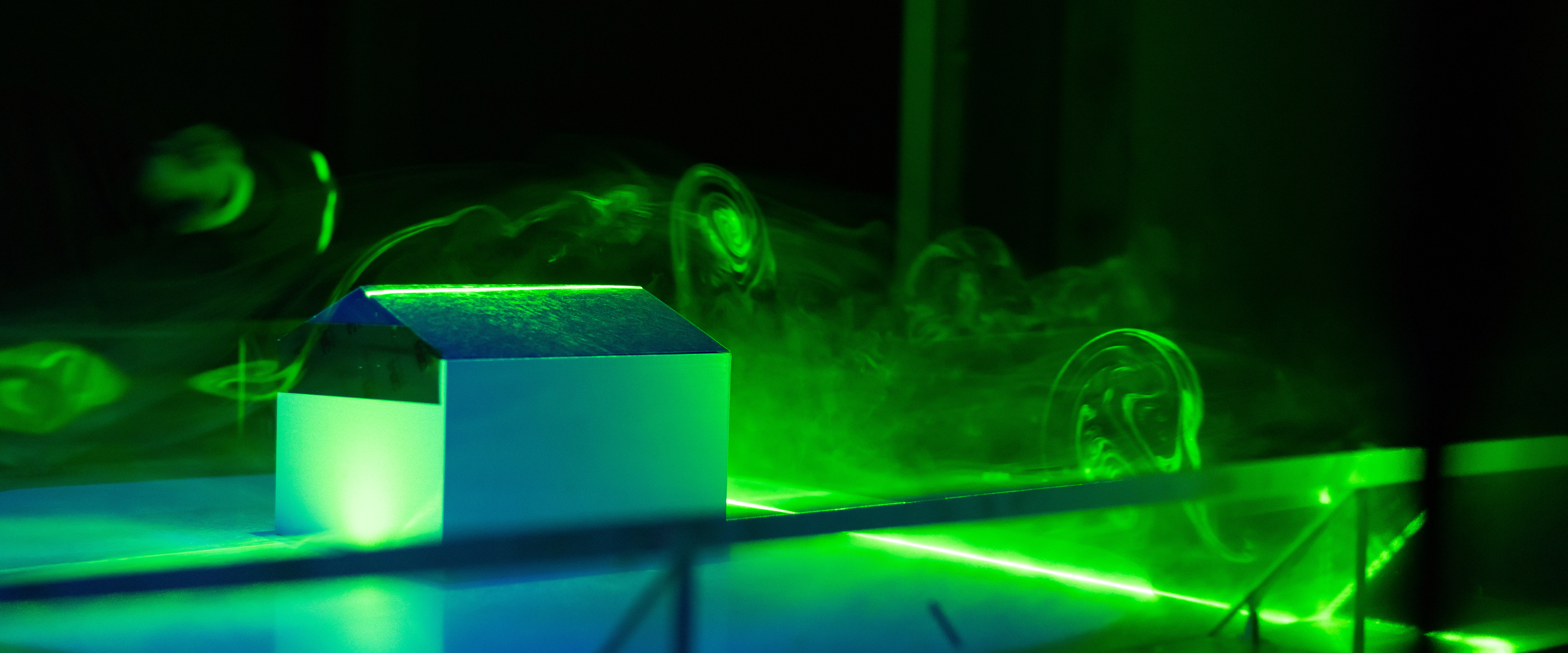Recent Wind Induced Load Tests
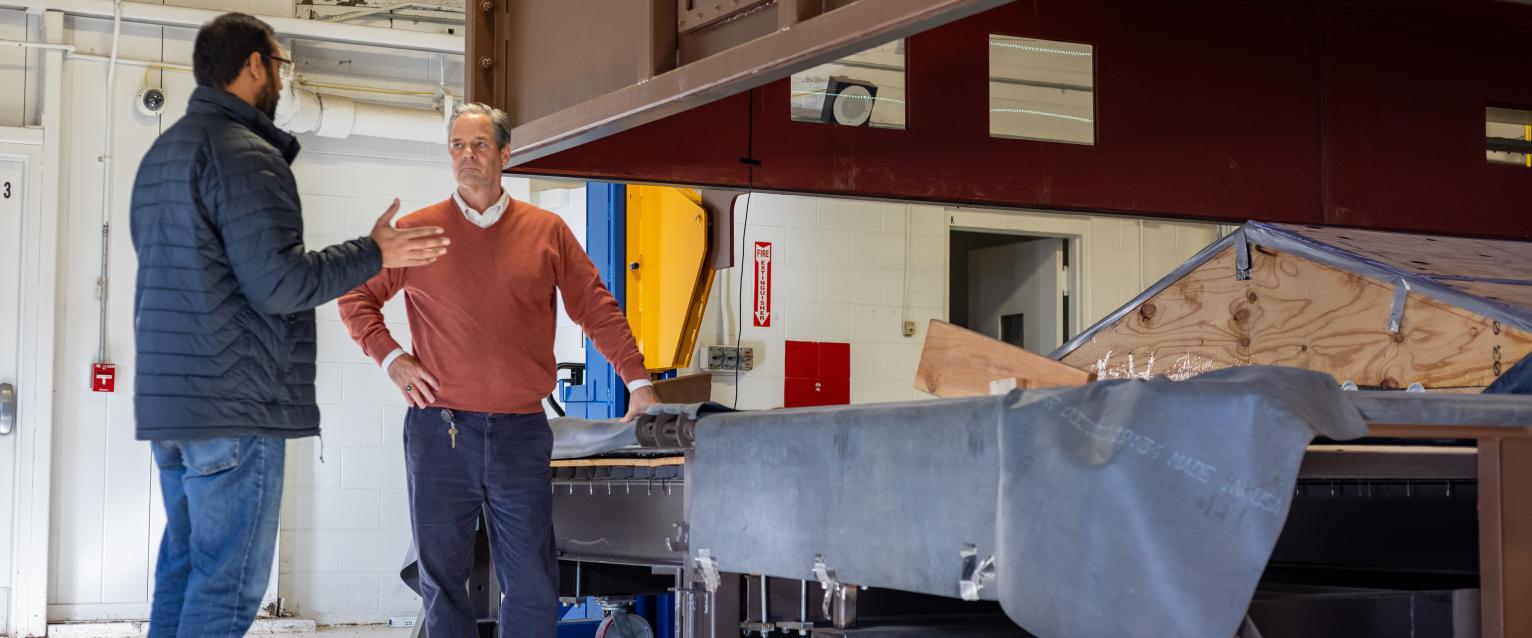
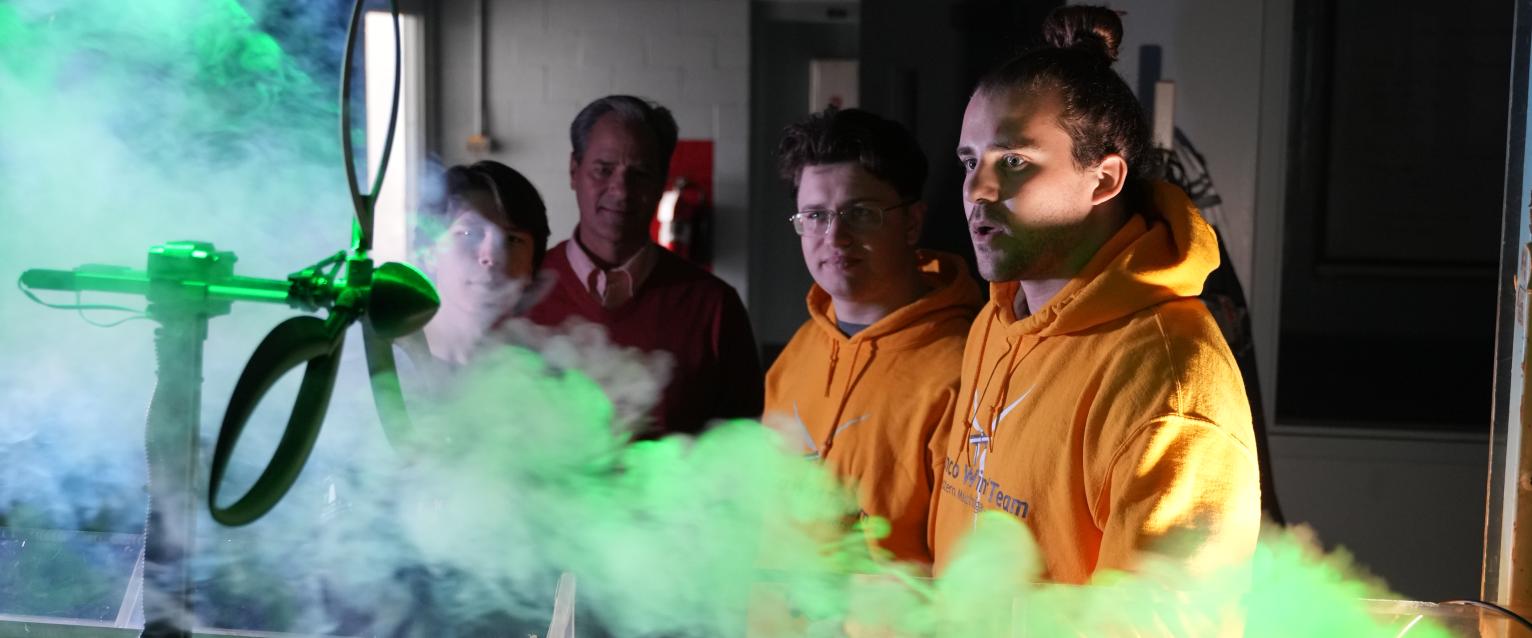

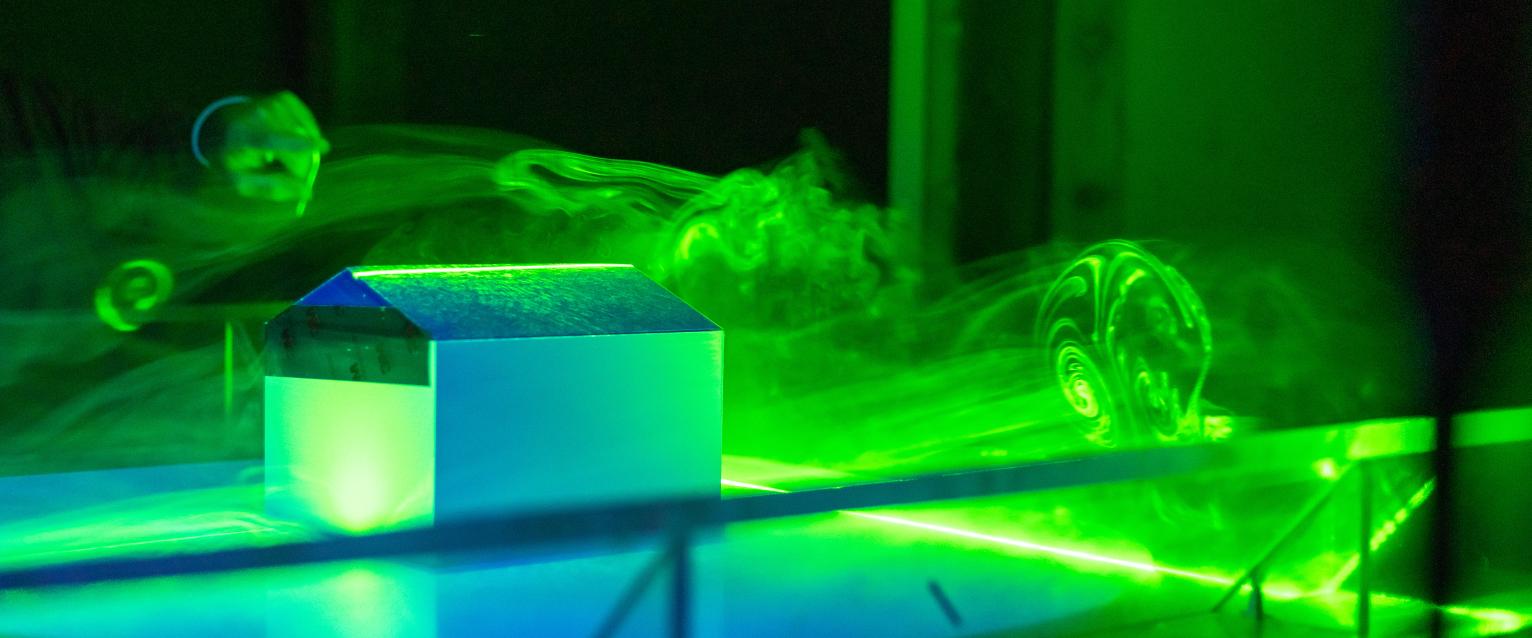

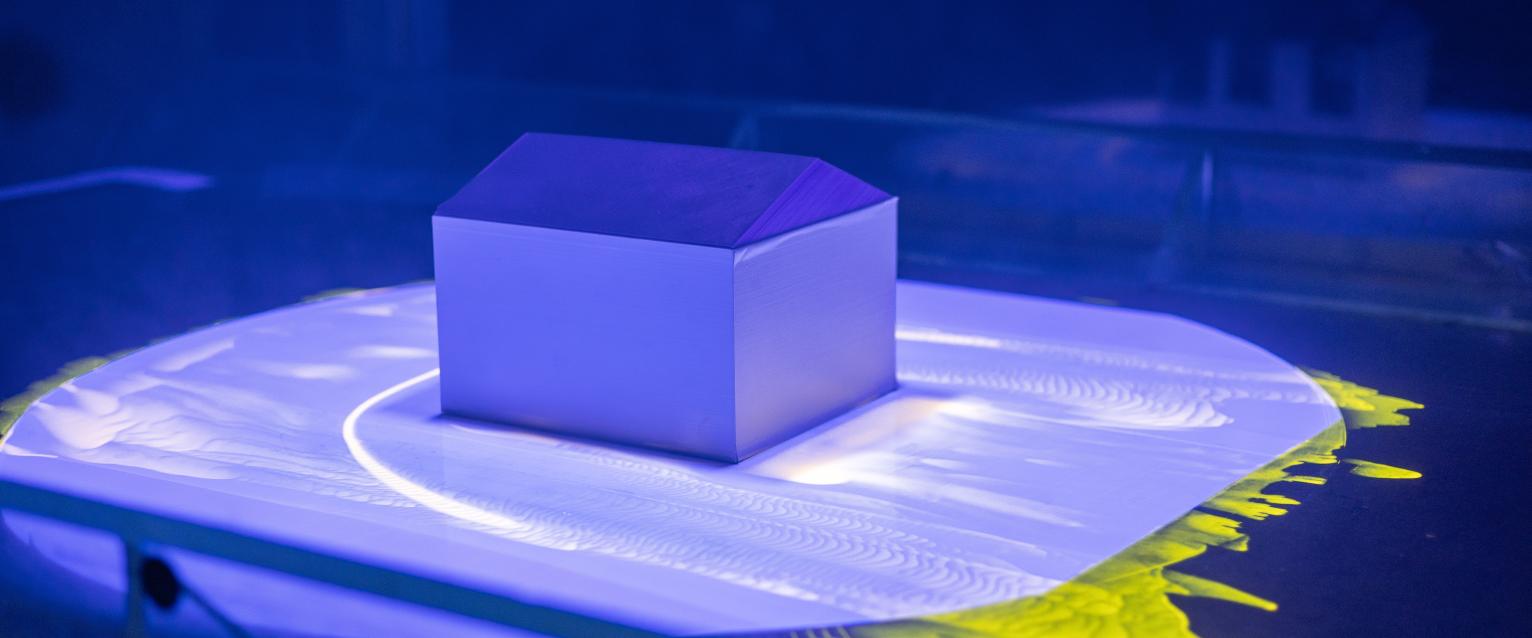
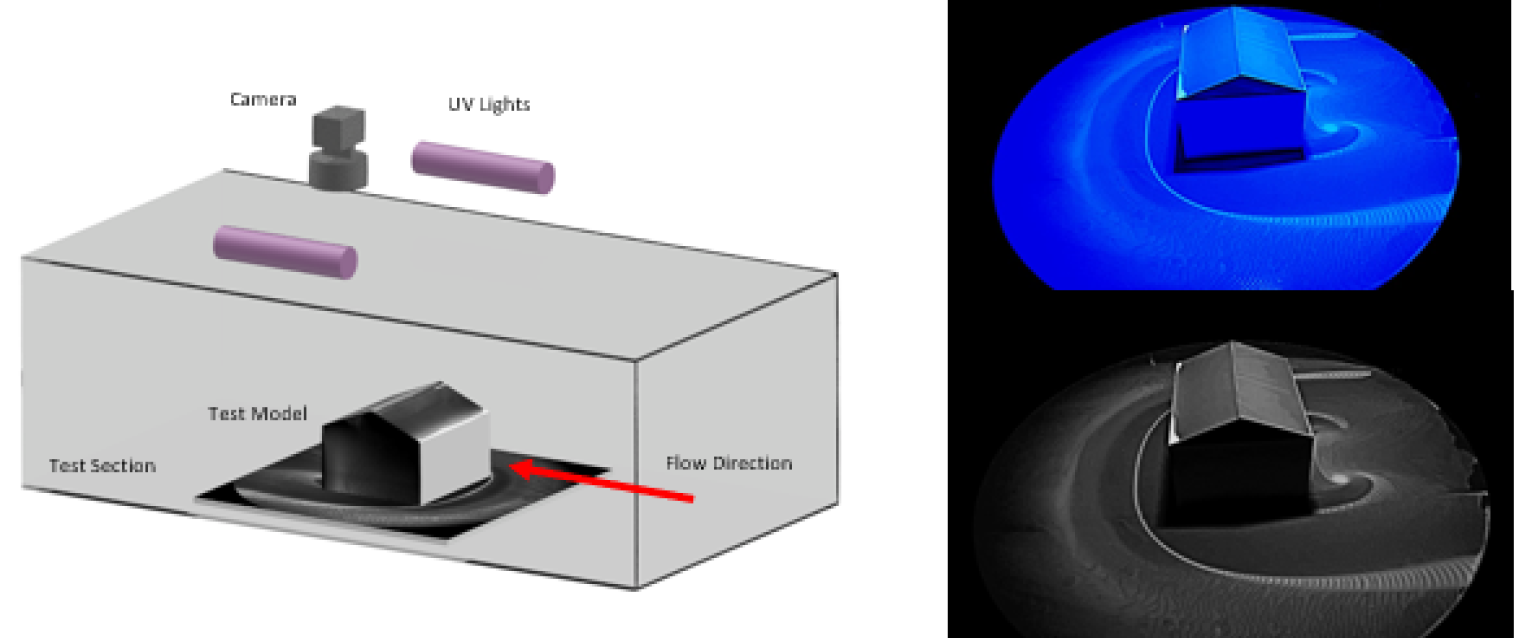

Western researchers debut new hybrid technology to test roof durability during hurricanes
The Bronco Construction Research Center's wind uplift table is the only of its kind in an academic setting in North America. The new hybrid technology further distinguishes Western as a leader in innovative research into wind uplift loading, forces and the associated fatigue that happens during extreme wind events.

Students earn accolades for innovative construction adhesives research
Patents
63/694,593
Dr. David Salazar, Dr. Tianshu Liu, Brian Montgomery
The following document describes the development of an underwater global luminescent oil-film (UGLOF) skin friction meter for the extraction of high resolution skin friction fields from underwater measurements. The UGLOF skin friction meter was developed for the extraction of skin friction fields from luminescent oil images by using the relationship between the thickness and the luminescent intensity of a thin oil-film doped with a luminescent dye. By using the thin-oil film equation, which provides the relation between skin friction and oil-film thickness, an approximation Euler-Lagrange equation can be derived using a variational formulation which can be then numerically solved to extract a snapshot solution of the skin friction field from two consecutive luminescent oil images. Using a superposition scheme, the spatial temporal evolution history of the oil film can be reconstructed. To demonstrate the effectiveness of the proposed technique, skin friction measurements were performed on a 65° delta wing at a 10° angle of attack (AoA) using Western Michigan University’s water channel at the Fluid Mechanics Laboratory. Furthermore, for comparison purposes, skin friction measurements were performed on the same model using the low-speed wind tunnel at WMU’s Applied Aerodynamics Laboratory. Both tests were performed at the same chord-based Reynolds number. From the results obtained, underwater and wind tunnel tests are found to be in agreement topologically speaking. Both results showed separation and reattachment lines, which are consistent with delta wings flow structures. Based on these results , the UGLOF technique has great potential as the only technique currently available for underwater global skin friction measurements.
63/694,794
Dr. David Salazar, Dr. Tianshu Liu, Brian Montgomery
Embodiments of the present invention may include a low-slope roofing system, the system comprising a geogrid layer, and a first coverboard layer, wherein the geogrid layer is attached to the first coverboard layer. In other embodiments, the geogrid layer is attached to the first coverboard layer with adhesive. In others, the geogrid layer is attached to the first coverboard layer with fasteners, or with both fasteners and adhesive. In some embodiments, the fasteners are plate fasteners, and may extend through the geogrid and one or more adjacent layers.
63/694,794
Dr. David Salazar, Dr. Tianshu Liu, Brian Montgomery
The following document describes the application of a global luminescent oil-film (GLOF) skin friction meter for the extraction of high resolution skin friction and surface pressure fields on buildings. By using the relation between skin friction and oil-film thickness given by the thin oil-film equation, combined with a variational formulation, the Global Luminescent Oil-Film (GLOF) skin friction meter is able to extract high resolution global skin friction fields. Next, using the relation between surface pressure and skin friction given by the Navier-Stokes (NS) equations, a variational formulation is applied to extract surface pressure from the skin friction fields obtained using the GLOF technique. In order to demonstrate the effectiveness of the proposed approach, global skin friction and surface pressure measurements were conducted on a generic low-rise building model using the Advanced Design Wind Tunnel (ADWT) at Western Michigan University’s Applied Aerodynamics Laboratory (AAL). Testing was performed at a freestream velocity of 20 m/s corresponding to a Reynold number ReL of 2.43 × 105. Skin friction and surface pressure data were collected from the ground, sides, and top sections of the model. The approach presented in this document provides an exceptional alternative for the image-based measurement of global skin friction and surface pressure fields on buildings, which compared to currently available techniques, is capable of extract high spatial resolution results (about one data point per pixel), which offers a significant advantage when studying flow structures and topological features (i.e. flow separation and/or reattachment) around buildings. This combined data can be used to further understand aerodynamic forces and wind loads acting on a building at any moment.
63/551,764
Brian Montgomery, Dr. Bilal Alhawamdeh, Ondrej Pekarovic
Two 2”x6” shear walls were tested having a Silyl Terminated Polyether Adhesive (STPA) bead applied to the stud/sheathing interface along with traditional nails. In addition, the 2”x6” structure consists of three vertical studs versus five in a standard 2”x4” wall, thus decreasing consumable lumber, yet increasing volume to accommodate additional insulation. Force-Displacement curves performed under monotonic conditions reveal the STPA wall demonstrated over 3 times the force compared to standard nails and a displacement of 2.5 inches compared to 5 inches for the standard nail-only. This indicates the nail only wall actually pushes away from the foundation, which is exacerbated by the bending moment of the nails.
63/701,186
Brian Montgomery, Dr. Bilal Alhawamdeh, Ondrej Pekarovic
This invention provides for reinforced wood structures including framing members and a method to reinforce the connection between structural members to increase the load bearing capacity of framing member intersections by adhering wood blocks to the wood framing members on each using an elastomeric adhesive comprising polyether. The increase in uplift bearing capacity was demonstrated through a comprehensive testing program that included both single connection tests and full roof assembly evaluations. The application of wood blocks with adhesive has been shown to effectively retrofit wood structure connections, enhancing uplift capacity by up to three times compared to non-retrofitted connections using toenails only, and by up to one and a half times compared to connections utilizing hurricane straps. Test results from dynamic wind uplift pressure on roof assemblies indicate that the wood block adhesive application increased the design uplift pressure by 50%, corresponding to an increase in design wind speed from 137 mph to 176 mph. Moreover, the wood block adhesive application exhibited improved serviceability by enhancing energy dissipation, which helped control deflection. This performance mitigates the risk of crack propagation in non-structural components, such as drywall and ceilings, prior to reaching the 1/8-inch deflection criterion.
63/xxx,xxx (recent)
Dr. Massood Atashbar, Dr. Dinesh Maddipatla, Brian Montgomery, Dr. Bilal Alhawamdeh, Ondrej Pekarovic
The present invention provides a comprehensive mold prevention system that combines predictive modeling, real-time sensing, and automated environmental control to maintain healthy building conditions. The system employs hygrothermal modeling software (WUFI® Pro) to analyze building envelope assemblies and identify critical zones where temperature and humidity conditions are most likely to support mold growth. Based on this analysis, smart sensing systems such as flexible hybrid electronic sensors are strategically embedded within wall cavities, particularly at high-risk interfaces such as the cold side of insulation layers or areas prone to thermal bridging. These sensors, incorporating both temperature and relative humidity monitoring capabilities, continuously transmit data to an intelligent control system that interfaces with the building's HVAC infrastructure. When conditions approaching mold-growth thresholds are detected, typically when relative humidity exceeds 60% in combination with temperatures between 20-30°C, the system automatically initiates targeted remediation actions. These responses include localized activation of embedded heating technologies such as PTC (Positive Temperature Coefficient) heaters to warm critical surfaces above the dew point, strategic adjustment of HVAC airflow patterns to increase ventilation in affected zones, and modulation of overall building humidity levels through enhanced air exchange or dehumidification cycles. The integration of a smart system represents a key innovation, as these systems can conform to irregular surfaces within building cavities and maintain reliable wireless communication even when embedded behind building materials. The heaters such as PTC heaters, also based on flexible electronics technology, provide precise, energy-efficient heating exactly where needed to prevent condensation without unnecessarily warming entire spaces.
63/701,155
Brian Montgomery, Dr. Bilal Alhawamdeh, Ondrej Pekarovic
Rooftop mechanical components (HVAC, solar) resist and transfer wind and seismic loads to the host structure via an anchor system. Depending on the roofing system construction, additional loads are introduced to the rooftop-mounted mechanical component, further stressing the support and attachment points. Various roofing system configurations and rooftop HVAC equipment were subjected to simulated dynamic wind uplift forces using the wind uplift facility at Bronco Construction Research Center located at Western Michigan University. This paper presents data from an ongoing investigation of critical variables currently undetected by loading standards used for rational engineering analysis of design loads for buildings and other structures in the United States. When subjected to wind uplift pressure, the single-ply mechanically attached roofing system assembly will cause the membrane to billow, transferring significant loads to the rooftop mechanical components and stressing the anchorage beyond the current load standards.


